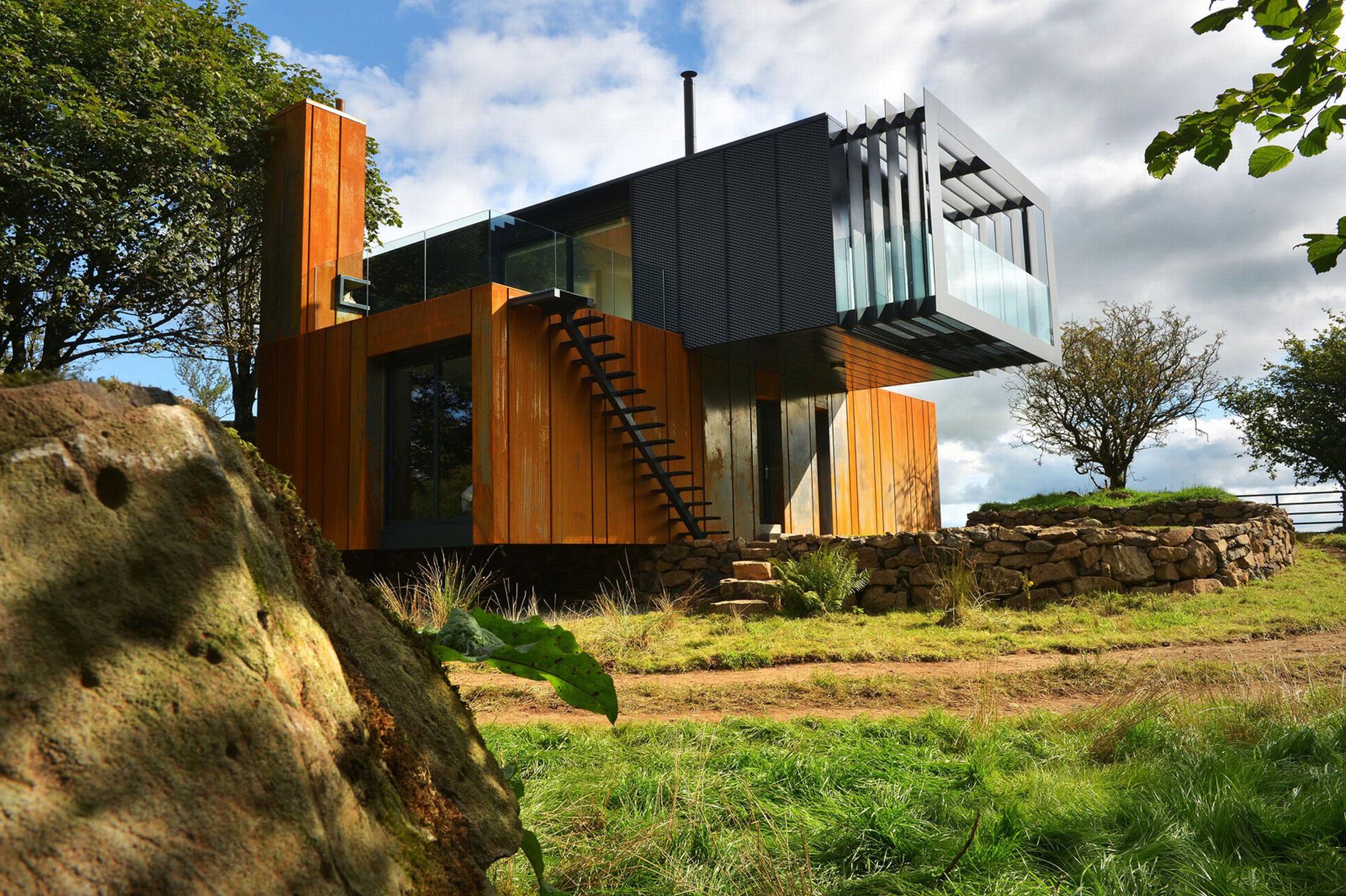The humble shipping container – or intermodal freight container to give it its even less inspiring official name – is a stalwart of the global economy. With countless millions of the corrugated steel boxes in use, however, it was arguably only a matter of time before some creative architect or designer would recognise their hidden potential.
Rather like over-sized LEGO bricks for grown-ups, industrious minds the world over have been upcycling and repurposing the near-indestructible shells into everything from home offices to meditation rooms and even swimming pools. The possibilities, it seems, are limitless.
Unlovable Utilitarianism Meets Contemporary Chic
There are numerous theories for the growing popularity of container conversions, but in many ways the trend seems an inevitable one. Small-space living is a popular theme the world over, from American cabins to the Kiwi bach, Russian datscha or even the common British shed. Combine that preoccupation with an ever-growing interest in sustainability, recycling and off-grid living, and the idea of converting disused shipping containers could almost have been created by a committee.
Much of the credit (some would say blame) for the growing interest in shipping container conversions can be attributed to increased media coverage of the subject. Standout conversions have already featured on TV programmes such as Grand Designs, and the Grillagh Water House in County Derry, Northern Ireland (pictured top) is one of the most ambitious examples. The bravura design features cantilevered containers balanced atop one another and a showpiece balcony extending from one end, framing the view onto the surrounding landscape.
Of course, the appeal of the subject lies more with the opportunity for anyone to buy a second-hand container (these can be purchased for a pittance on ebay and other sites) and then to convert them into the owner’s personal dream use, whether prosaic or fantastical. Home office? Why not. Home cinema? Even better. The limitations lie only with the owners’ imaginations.
Another staple of British TV, Amazing Spaces, presented by architect George Clarke, champions just such low budget (and at times even guerrilla) projects and is now fostering a popular movement to reinvent and repurpose utilitarian spaces, such as containers, or even commercial vehicles like buses.
While more ambitious projects are being created by architects, anyone has the option of purchasing and repurposing a container
Low Cost, High Impact
Regrdless of whether you do your sums in dollars, pounds or euros, stories abound of containers being bought and converted for the equivalent cost of a small second-hand car. Just as there is no limit on how much one could potentially invest if one wanted to trick out a container with top-of-the-range gadgetry, there is almost no limit to how little one can invest.
Many would say, in fact, that part of the charm of such a conversion is in being resourceful and gathering materials from a variety of imaginative sources. After all, if you wanted a luxury extension, you would simply hire an architect and take a more conventional approach to the project. No, the appeal of shipping container conversion lies more in the journey and the process.
Nevertheless, would-be container ‘captains’ would still be wise to proceed with a degree of caution. Wherever you live, be sure to heed local planning regulations. In most areas you can escape more stringent planning regulations by virtue of the fact that containers are generally viewed as temporary, movable structures – and low-height ones at that. There are exceptions though and some authorities that are now becoming wary of the fleet of containers heading in their direction.
Another factor to consider when perusing on ebay or other online sellers is the provenance of your container: What condition is the container in? What kind of goods might they have been shipping? At the very least, you might want to consider an industrial cleaning of your container to remove any potential contaminants before kitting it out as your new guest accommodation.
A World Contained Within
When planning your own container conversion, take inspiration from the endless variety of projects to be discovered online. The very best projects – such as the creation of Jim Poteet in the artists’ community of San Antonio, Texas (shown above) – need not exceed the ambitions of the committed hobbyist. There are still ideas and ingenious uses of space that can be translated to one’s own projects and tailored to suit almost any budget.
And if anyone asks, you’re not just fitting out an annexe or extension, you’re embarking on a pioneering experiment in recycling, upcyling and preserving our industrial heritage. Precious cargo indeed!
Article by James Lee-Tullis











Sorry, the comment form is closed at this time.